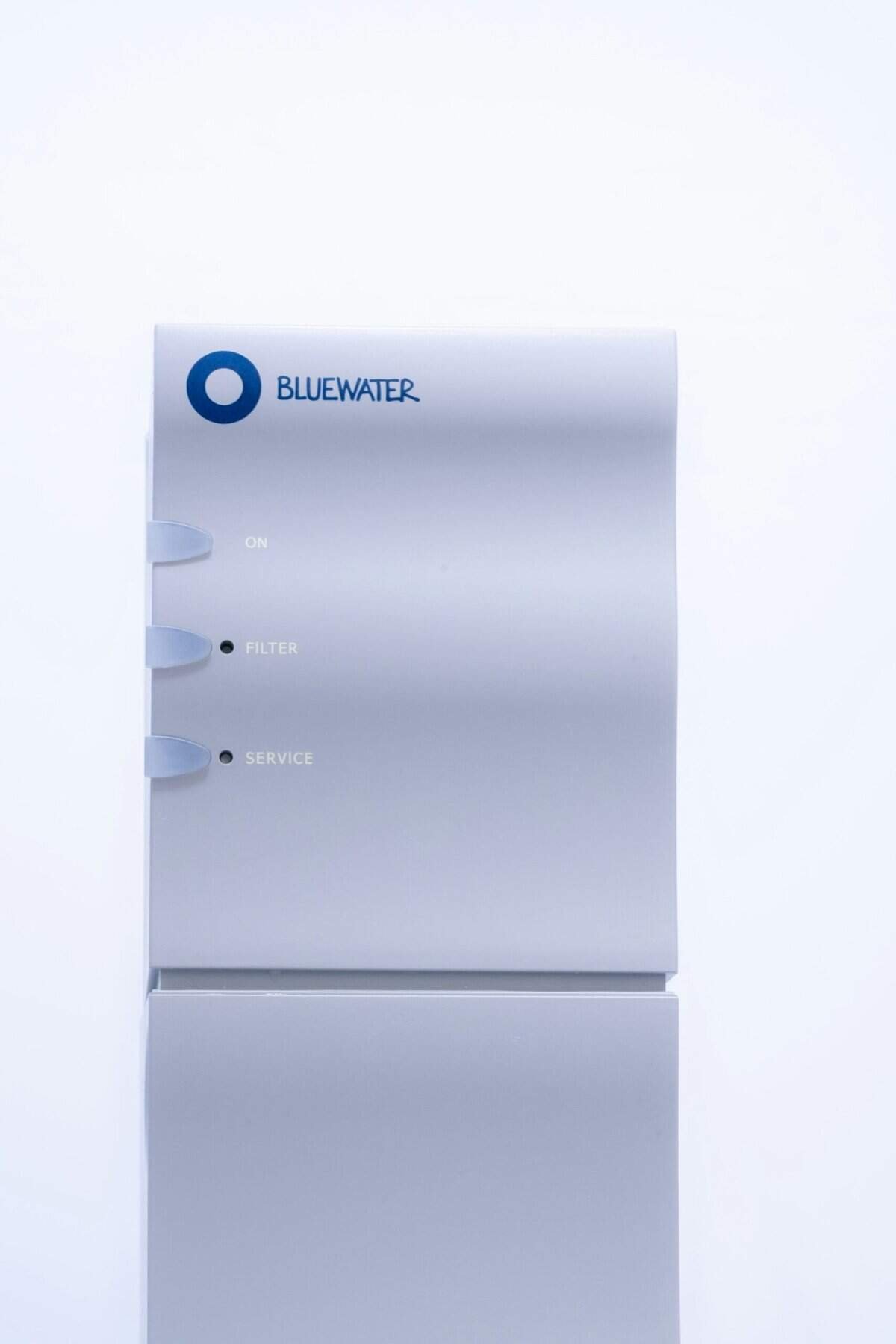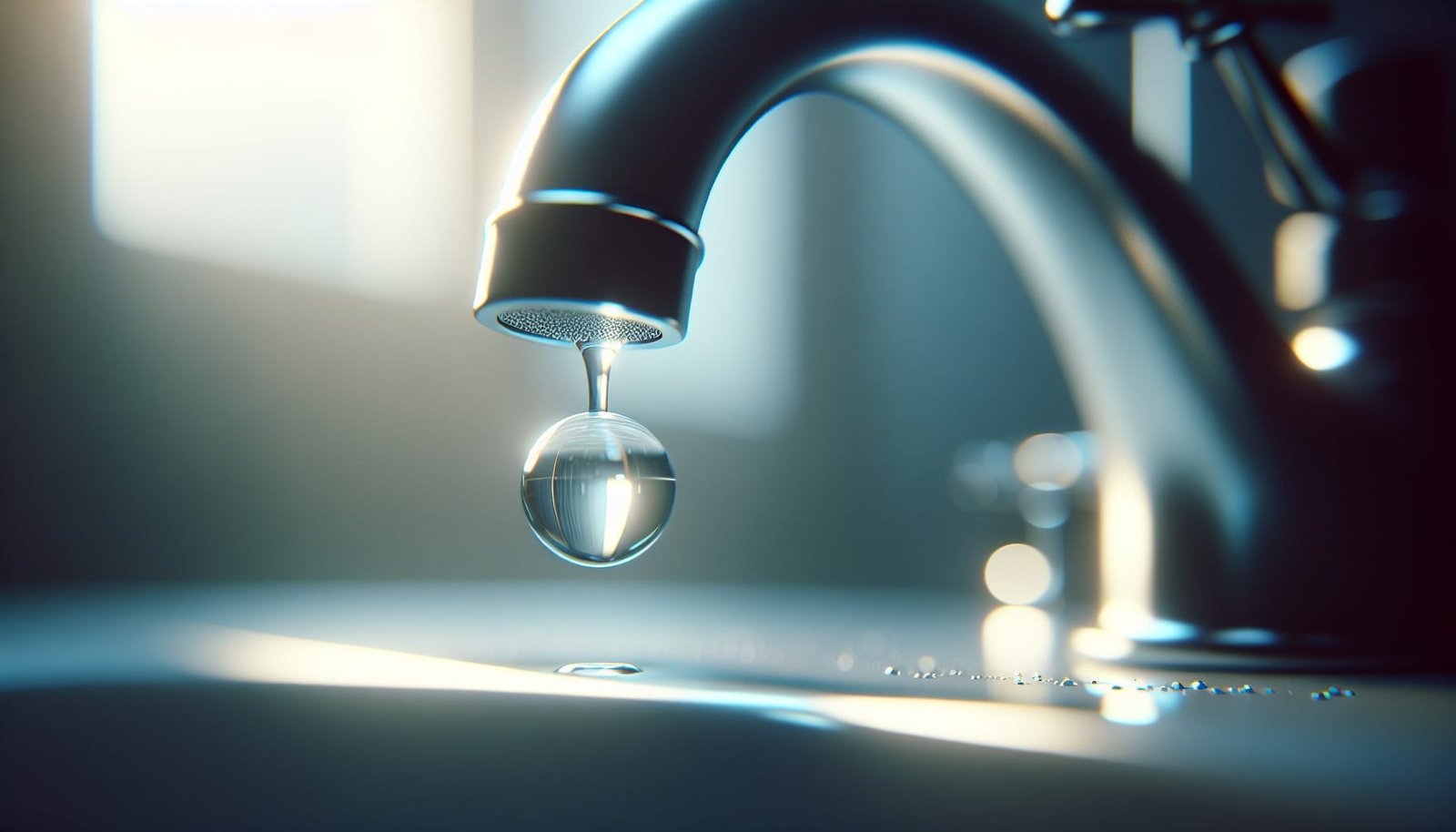? Do you notice a rotten-egg smell when you turn on your tap and wonder what’s the safest way to fix it?

What’s The Safest Way To Deal With Sulfur-smelling Water?
Sulfur-smelling water is common, and that rotten-egg odor usually signals hydrogen sulfide (H2S) or sulfur compounds in your supply. You can manage or eliminate the smell safely once you know the cause, test the water, and select the right treatment.
Why this matters to you
The smell is unpleasant and can affect cooking, bathing, and laundry. In most cases it’s more of a nuisance than an immediate health threat, but some causes require prompt action to protect your water quality and your household.
What causes water to smell like sulfur?
Several chemical and biological processes produce sulfur or hydrogen sulfide gas in water. Understanding the cause will guide the safest treatment method for your situation.
Hydrogen sulfide gas from wells
If you use a private well, H2S often comes from naturally occurring sulfate-reducing bacteria (SRB) or from contact between groundwater and sulfur-bearing minerals. You’ll usually smell the gas as soon as cold water runs.
Bacterial growth inside plumbing or tanks
Bacteria that reduce sulfate can colonize the inside of well pipes, storage tanks, and even some filter media. When they do, they generate H2S as part of their metabolism. The smell may be intermittent or show up primarily in hot water.
Reactions within the water heater
If the sulfur smell is strongest in hot water, your water heater is a likely source. Magnesium anode rods react with sulfur compounds and can create H2S in the tank. Replacing the rod or cleaning the tank often resolves the issue.
Municipal supply or treatment chemicals
Rarely, a municipal supply may introduce sulfur compounds via source water or treatment processes. If you’re on a public system, check with your water utility before taking major steps; they may already be addressing the problem.
Is sulfur-smelling water dangerous?
You’ll want to know whether the smell is just annoying or a real health risk.
Health risks at typical household levels
At the low concentrations that cause smell in household water (usually below a few mg/L), H2S is more of an odor nuisance than a toxic hazard. You should still avoid deliberate inhalation and keep living spaces ventilated if the gas builds up.
Risks at higher concentrations
At higher concentrations in confined spaces (not typically found in water), H2S can cause irritation and more severe effects. If you suspect a very strong release of gas in your home or well structure, leave the area and call a professional.
Microbial and water-quality concerns
If the smell results from bacteria, you might have other water-quality issues too—like iron bacteria or elevated iron and sulfate levels—which can affect plumbing, fixtures, and overall safety. Testing will tell you whether action beyond odor control is needed.
How to determine the cause: testing and diagnosis
Before choosing a treatment, test the water and diagnose the source. This protects your investment and ensures you choose an effective method.
Do a simple smell test
Run cold water, then hot water, and note where the odor is strongest. If only hot water smells, the heater is the likely source. If both cold and hot smell, the source is upstream of the heater.
Household test options
You can use home test kits for H2S or order lab tests to measure sulfur, sulfate, iron, and bacterial presence. Home tests give quick insight, while lab tests provide accurate concentrations and bacterial analysis.
Professional testing
A certified lab or water treatment professional can perform tests that distinguish between dissolved hydrogen sulfide, sulfur-reducing bacteria, and sulfate levels. If you suspect bacteria or your well system is complex, professional testing is recommended.
Record keeping
Keep a record of smell patterns, test results, and any interventions. This helps you or a technician evaluate treatment effectiveness over time.

Immediate steps you can take safely
There are a few safe short-term measures you can take while you evaluate and plan longer-term treatment.
Increase ventilation and avoid enclosed spaces
If the odor is strong at the tap, use ventilation when showering and avoid staying in steam-filled bathrooms. This reduces the chance of inhaling higher concentrations of gas.
Run the cold water
If the smell is stronger in hot water, run cold water for a minute to clear residual H2S. This won’t fix the source, but it can temporarily reduce odor.
Avoid using strong chemicals without guidance
Don’t pour large amounts of bleach, acids, or other chemicals into the well or plumbing without testing and professional advice. These can react unpredictably and might worsen bacterial growth or corrode equipment.
Contact your water utility or a professional
If you’re on municipal water or if the smell is very strong, call your water utility or a licensed well contractor. They can advise and may already be aware of system-level issues.
Treatment options: what works and when
Below is a summary of common treatment methods, their suitability, and what you should expect for maintenance and cost. Use the table to compare options quickly.
Summary table of treatment methods
| Treatment | Best for | How it works | Maintenance | Typical cost range (installed) |
|---|---|---|---|---|
| Shock chlorination (well) | Bacterial H2S in private wells | High-dose chlorine disinfects well and plumbing | Occasional (repeat if bacteria return) | $100–$400 (DIY) / $200–$800 (pro) |
| Continuous chlorination + carbon | Moderate H2S + bacteria | Chlorine oxidizes H2S and kills bacteria; carbon removes chlorine | Regular monitoring, carbon replacement | $1,000–$5,000 |
| Aeration (air injection or spray) | Dissolved H2S (chemical) | Strips H2S gas into air and vents it outside | Regular media cleaning; requires air handling | $1,500–$6,000 |
| Activated carbon filtration | Low levels of H2S (taste/odor) | Adsorbs hydrogen sulfide and organics | Frequent media changes with high H2S | $300–$2,500 (POU or whole house) |
| Manganese greensand / catalytic carbon | Low-to-moderate H2S, iron, manganese | Oxidizes and filters sulfur compounds with regeneration | Periodic regeneration with potassium permanganate or backwashing | $1,200–$4,500 |
| Oxidizing filters (chlorine, ozone, permanganate) | Moderate-to-high H2S | Oxidize H2S to elemental sulfur then filter | Chemical feed and periodic maintenance | $1,500–$6,000+ |
| Reverse osmosis (point-of-use) | Trace H2S at drinking-tap | Membrane removes dissolved H2S and many contaminants | Membrane replacement and prefilters | $300–$2,000 (under-sink) |
| Replace water heater anode rod | Hot-water-only smell from tank | Replace magnesium rod to stop reaction that produces H2S | Check rod during regular maintenance | $50–$300 (part + labor) |
How to choose the right treatment
Base your choice on test results, source (well vs municipal), H2S concentration, flow requirements, and whether bacteria are present. For bacterial causes, disinfection (shock chlorination) is typically required. For dissolved chemical H2S at low concentrations, carbon or aeration may be the best option.

Detailed look at each treatment method
You’ll want to understand pros, cons, and practical steps for each option before you decide.
Shock chlorination for wells
Shock chlorination disinfects your well, plumbing, and storage tank to eliminate sulfate-reducing bacteria. You’ll introduce a strong chlorine solution, circulate it through the system, let it sit, then flush until chlorine levels return to safe limits.
- Pros: Low cost if DIY, kills bacteria that produce H2S.
- Cons: Temporary if the source isn’t fully controlled, requires correct procedure and safety precautions.
- Safety tip: Don’t use bleach with other chemicals, and follow concentration and contact-time guidance.
Continuous chlorination with carbon filtration
This method keeps a residual disinfectant in the system to control bacteria and oxidize H2S, while activated carbon removes chlorine and any oxidized sulfur taste or odor.
- Pros: Addresses both bacteria and chemical H2S, effective for many wells.
- Cons: Requires chemical feed equipment, ongoing chemical supply, and carbon replacement.
Aeration systems
Aeration physically removes dissolved H2S by encouraging it to escape as gas and venting it safely outdoors. Systems include packed-tower aerators, spray aeration, or air-injection with a degas chamber.
- Pros: Very effective for chemical H2S, no chemicals required, minimal taste impact.
- Cons: Requires proper venting and electricity; not suitable if H2S is from bacteria (which could colonize the system).
Activated carbon filters
Granular activated carbon (GAC) adsorbs low levels of H2S and removes associated tastes and odors. This method works best when H2S concentrations are low (usually <0.5 mg />).
- Pros: Affordable for point-of-use or whole-house at low H2S levels.
- Cons: Carbon can become a medium for bacterial growth if H2S is biologically produced; it has a finite capacity and must be replaced regularly.
Oxidizing filters and media (greensand, catalytic carbon)
Specialized filter media oxidize H2S and then trap the resulting sulfur particles. Greensand often requires periodic regeneration with potassium permanganate.
- Pros: Good for combined iron and H2S problems.
- Cons: Requires regeneration chemicals and careful maintenance.
Reverse osmosis (RO)
RO systems at the tap can remove low levels of H2S and provide excellent drinking water quality.
- Pros: Very effective for point-of-use; compact.
- Cons: Not practical for whole-house; prefiltration recommended; membrane fouls with high iron or bacterial loads.
Water heater fixes
If hot water is the only issue, replacing the water heater anode rod (magnesium replaced with aluminum/zinc) and flushing the tank often solves the problem. You may also need to disinfect the tank if bacteria are present.
- Pros: Low-cost fix if the cause is inside the heater.
- Cons: Temporary if bacteria from source water continue to colonize the tank.
Maintenance and long-term monitoring
Once you’ve treated the problem, stay on top of maintenance to prevent recurrence and protect your plumbing.
Monitor chlorine residual if you chlorinate
If you use continuous chlorination, regularly check residual chlorine levels to ensure ongoing disinfection. Record readings and chemical refill timings.
Replace filters and media on schedule
Activated carbon, RO membranes, and oxidizing media need routine replacement. Follow manufacturer guidance and adjust frequency if smell returns sooner.
Annual water tests
Test at least annually if you’re on a private well, or more often if you had bacterial problems. Testing keeps you informed and helps catch issues early.
Inspect well components
Check well caps, vents, and seals for damage, and make sure the wellhead is above grade and protected from surface contamination.
Maintain water heater
Flush your tank annually, inspect anode rods, and replace them when they’re consumed. This helps prevent smells and extends heater life.

Costs, financing, and practical planning
You’ll want to budget realistically for treatment and maintenance.
Typical cost factors
Costs depend on whether you need point-of-use or whole-house systems, the complexity of your well, whether bacteria are present, and local labor rates. Energy and chemical costs are ongoing with some systems.
Financing and phased approaches
If upfront costs are high, consider staged treatments: start with diagnosis and minor fixes (heater anode, shock chlorination), then install a permanent system if needed. Check for local grants or loans for private well improvements in your area.
ROI and home value
Treating water quality issues preserves plumbing, improves appliance longevity, and protects home value. Buyers often request water-quality documentation, so keep records of testing and treatments.
Troubleshooting common scenarios
If the smell persists, here’s how to narrow down what’s going on and next steps.
Scenario: Only hot water smells
Likely cause: water heater anode rod or tank bacteria. Next steps: flush tank, replace magnesium anode with aluminum/zinc, shock chlorinate tank if bacterial.
Scenario: Cold water and hot water smell
Likely cause: source water (well or distribution). Next steps: test water for H2S, iron, sulfate, and bacteria. Consider shock chlorination or aeration/oxidation solutions.
Scenario: Smell appears after installing a carbon filter
Likely cause: carbon bed colonized by bacteria or adsorbed organics changing smell. Next steps: remove and replace carbon, disinfect system, treat source if bacteria are present.
Scenario: Intermittent odor
Likely cause: seasonal changes in groundwater chemistry, shifting bacterial activity, or changes in water table. Next steps: track patterns, test at different times, consult a professional for system sizing that covers peak conditions.
Troubleshooting checklist (quick guide)
| Step | Action | Why it helps |
|---|---|---|
| 1 | Note where smell is strongest (cold/hot/both) | Narrows source location |
| 2 | Test water (home kit or lab) | Confirms H2S concentration and bacteria |
| 3 | Inspect water heater and anode rod | Identifies tank-related causes |
| 4 | Check wellhead seals and venting | Prevents surface contamination or gas entrapment |
| 5 | Consider shock chlorination for wells | Kills bacteria if present |
| 6 | If chemical H2S, evaluate aeration or oxidation | Removes dissolved gas without chemicals |
| 7 | If treatment installed, audit maintenance | Ensures ongoing effectiveness |

When to call a professional
Some problems require expertise for a safe and lasting fix.
Call a well contractor or licensed plumber if:
- You find bacteria in lab tests.
- The H2S concentration is high or you smell gas throughout the home.
- You need complex systems like aeration towers or continuous chlorination installed.
- You’re unsure how to safely chlorinate a well or handle chemical feeds.
Call your water utility if:
- You’re on municipal water and suspect the smell is system-wide.
- You want confirmation that the supply is being managed or tested by the utility.
Choose a contractor carefully
Ask for local references, licenses, and experience with H2S problems. Get multiple quotes and request a written plan with expected maintenance responsibilities and costs.
Practical safety tips
You’ll want to act safely when inspecting and treating the problem.
Ventilation and gas safety
Ensure good ventilation when using water that smells strongly and when working near wells or equipment that can accumulate gas. If gas seems concentrated or you feel lightheaded, leave the area and call for help.
Chemical handling
Follow label directions for bleach and oxidants. Use personal protective equipment (gloves, goggles), and never mix bleach with ammonia or acids.
Well disinfection safety
If you shock chlorinate, isolate and bypass active treatment devices until chlorine is flushed to safe levels. Don’t drink water until test results show residual chlorine is below recommended limits.
Frequently asked questions
Here are concise answers to questions you may still have.
Will boiling water remove the smell?
Boiling can remove some H2S by releasing the gas to the air, but it won’t fix the source and may make the air smell worse indoors. Ventilate if you use this short-term tactic.
Can I use a water softener?
Softening does not remove hydrogen sulfide effectively and may become fouled by sulfur and iron. It’s not a primary fix for sulfur smell.
How long does shock chlorination last?
It depends on the source of contamination. If bacteria are eliminated and the well is properly sealed, it may last years. If contamination continues, it may return and require repeated treatment or a permanent solution.
Is sulfur-smelling water bad for plumbing?
Elemental sulfur and H2S can corrode plumbing and appliances over time, especially in combination with other corrosive water characteristics. Treating the issue protects your system.
Final recommendations and action plan
Use this checklist to move forward safely and effectively.
- Identify where the smell is strongest (hot, cold, or both).
- Test your water with a lab or accurate home kit for H2S, sulfate, iron, and bacteria.
- If hot-water-only, inspect and service the water heater and change the anode rod to aluminum/zinc if indicated.
- If bacteria are present in a private well, perform shock chlorination and re-test. Consider continuous disinfection if bacteria reappear.
- For chemical H2S, consider aeration, oxidizing filters, or activated carbon depending on concentration and flow needs.
- Budget for installation and ongoing maintenance, and keep all test and service records.
- Hire licensed professionals for complex systems or if you feel unsafe handling chemicals or gas.
You can get rid of the rotten-egg smell safely by diagnosing the cause, choosing an appropriate treatment, and maintaining the system. With proper testing and care, your water can be odor-free and safe for daily use.
